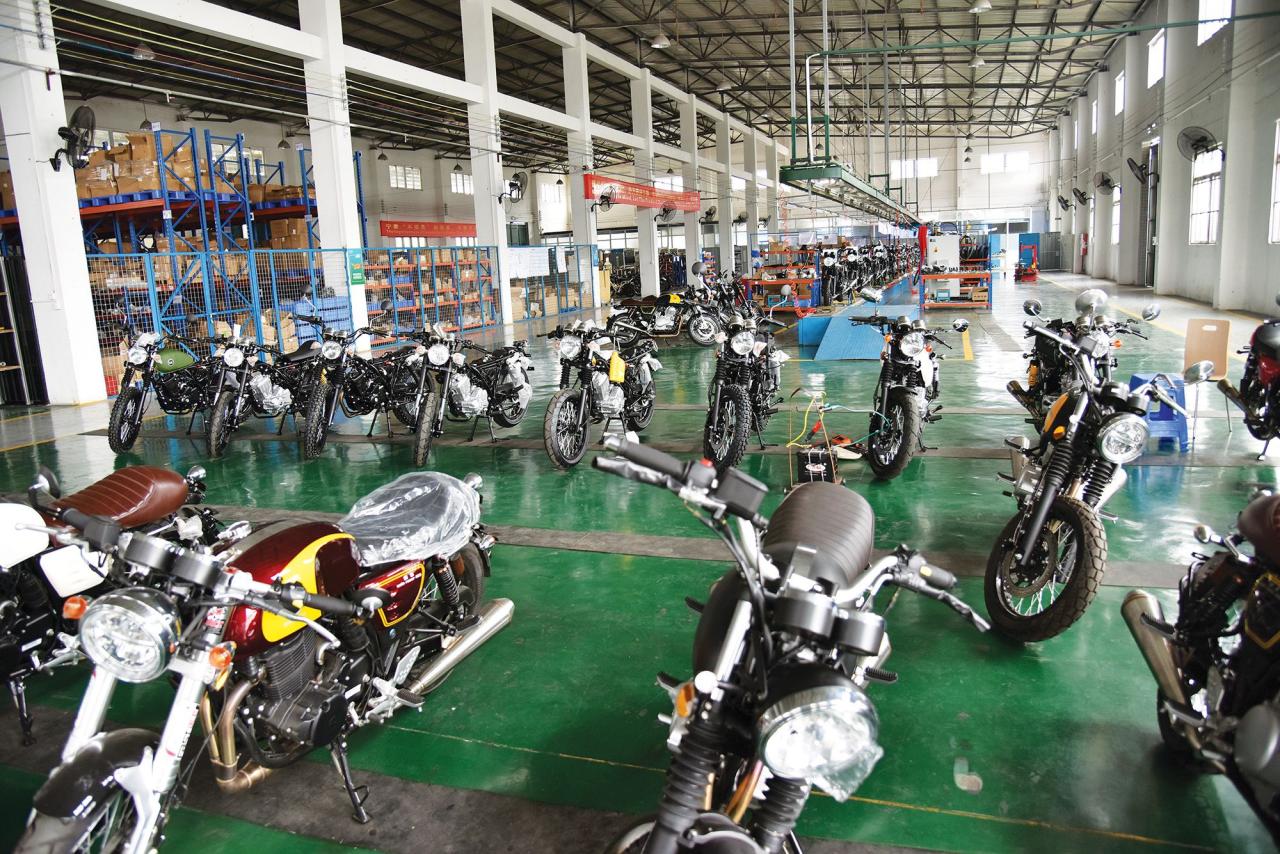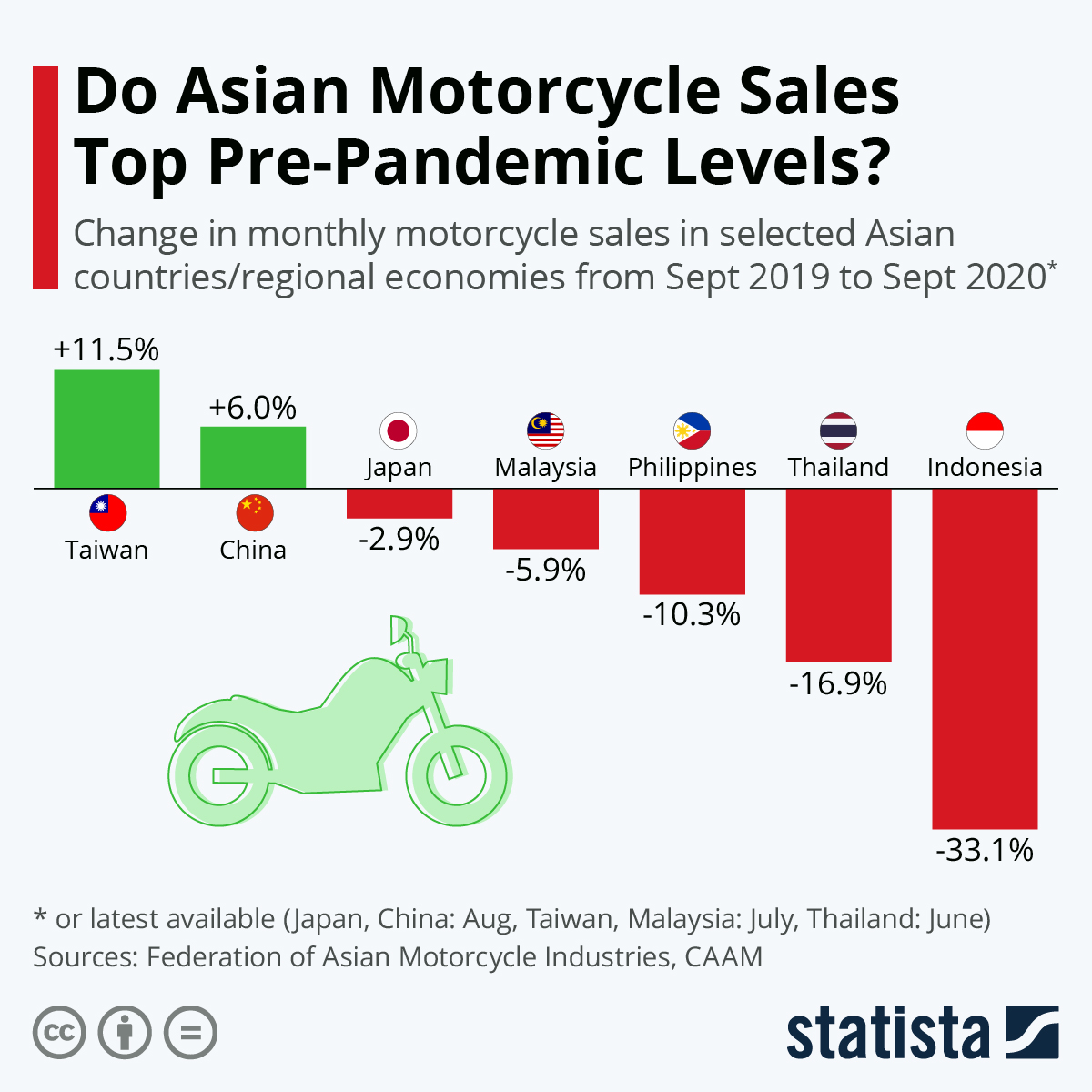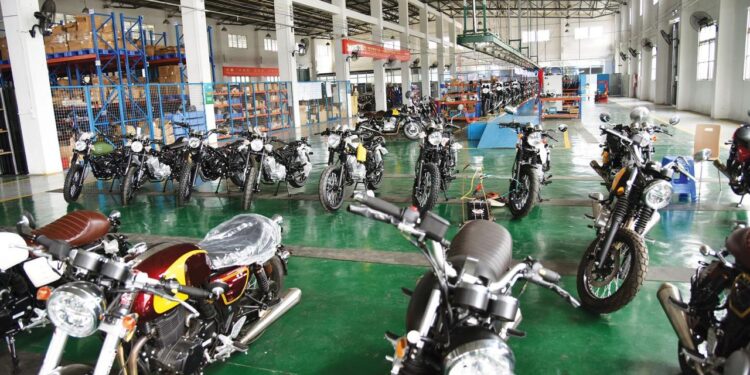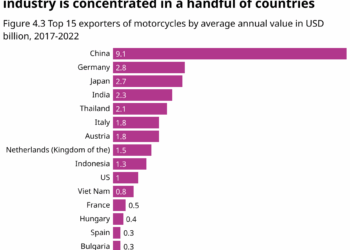Delving into the future of the motorcycle industry in Asia unveils exciting prospects and advancements that are set to reshape the market. From cutting-edge technological innovations to shifting consumer behaviors, this industry is on the brink of transformation.
As we navigate through the dynamic landscape of the motorcycle industry in Asia, we uncover a myriad of factors that are poised to redefine the way motorcycles are manufactured, marketed, and embraced by consumers across the continent.
Current State of the Motorcycle Industry in Asia
The motorcycle industry in Asia is experiencing rapid growth and development, driven by a combination of factors such as increasing urbanization, rising disposable incomes, and the need for cost-effective transportation solutions.
Market Trends and Major Players
- Asia is home to some of the largest motorcycle markets in the world, with countries like India, China, Indonesia, and Vietnam leading the way in terms of sales volume.
- Major players in the motorcycle industry in Asia include companies like Honda, Yamaha, Suzuki, and Bajaj Auto, which have a significant market share in various countries across the region.
- Electric motorcycles are gaining popularity in Asia, with companies like Revolt Motors in India and Evoke Motorcycles in China leading the way in the electric two-wheeler segment.
Key Factors Influencing Industry Growth
- Government regulations and policies play a crucial role in shaping the motorcycle industry in Asia, with incentives for electric vehicles and restrictions on emissions driving innovation and adoption of cleaner technologies.
- Rising urbanization and congestion in major cities have led to an increased demand for motorcycles as a convenient and affordable mode of transportation.
- Economic factors such as GDP growth, disposable incomes, and financing options also influence the purchasing power and preferences of consumers in different Asian countries.
Cultural Preferences and Economic Factors
- Cultural preferences for two-wheelers as a practical and versatile mode of transport influence the demand for motorcycles in countries like India and Indonesia, where motorcycles are often used for daily commuting and commercial purposes.
- Economic factors such as fuel prices, maintenance costs, and availability of credit facilities impact the affordability and ownership patterns of motorcycles in different Asian markets.
- Changing lifestyles and consumer preferences towards convenience, style, and performance are also driving the demand for premium and high-performance motorcycles in urban centers across Asia.
Technological Innovations Shaping the Future of Motorcycles in Asia

The motorcycle industry in Asia is witnessing a rapid evolution driven by technological advancements. From electric motorcycles to AI integration, the future of motorcycles in Asia is set to be transformative.
Electric Motorcycles vs. Gasoline-Powered Motorcycles
Electric motorcycles are gaining popularity in Asia due to their eco-friendly nature and lower maintenance costs compared to traditional gasoline-powered motorcycles. These electric bikes are sustainable and contribute to reducing carbon emissions, which is crucial for environmental conservation. On the other hand, gasoline-powered motorcycles still dominate the market in terms of sheer numbers, but there is a growing shift towards electric alternatives.
The challenge lies in developing the infrastructure to support widespread adoption of electric motorcycles, such as charging stations and battery recycling facilities.
AI and Automation in Motorcycle Technology
AI and automation are revolutionizing motorcycle technology in Asia by enhancing safety and performance. Advanced safety features such as collision detection, automatic braking systems, and adaptive cruise control are being integrated into motorcycles to reduce accidents and improve rider safety.
AI-powered systems can analyze data in real-time and provide valuable insights to riders, making their journeys safer and more efficient. Automation in motorcycles also extends to self-balancing technology and semi-autonomous riding capabilities, which are gradually becoming more prevalent in the industry.
Environmental Sustainability and Regulations

Environmental sustainability and regulations play a crucial role in shaping the future of the motorcycle industry in Asia. As concerns about climate change and air pollution continue to rise, governments are imposing stricter emission standards and regulations to promote a cleaner environment.
This has led manufacturers to adapt and innovate to meet these new requirements while also striving to achieve environmental sustainability goals.
Impact of Environmental Regulations
- Environmental regulations in Asia are becoming more stringent, focusing on reducing emissions and promoting cleaner technologies in the motorcycle industry.
- Manufacturers are facing pressure to comply with these regulations, leading to the development of new technologies and manufacturing processes to reduce the environmental impact of motorcycles.
- Non-compliance with environmental regulations can result in fines and penalties, as well as damage to the reputation of manufacturers in the market.
Adapting to Stricter Emission Standards
- Manufacturers are investing in research and development to create more fuel-efficient engines and reduce emissions from motorcycles.
- Adoption of technologies such as fuel injection systems, catalytic converters, and improved exhaust systems are helping manufacturers meet emission standards.
- Collaborations with regulatory bodies and environmental organizations are enabling manufacturers to stay updated on the latest regulations and make necessary changes to their production processes.
Shift Towards Electric Motorcycles
- Electric motorcycles are gaining popularity in Asia as a cleaner and more sustainable alternative to traditional combustion engine motorcycles.
- Challenges such as limited charging infrastructure, high initial costs, and range anxiety are hindering the widespread adoption of electric motorcycles in the region.
- Manufacturers are working on improving battery technology, increasing range, and reducing costs to make electric motorcycles more accessible and appealing to consumers.
Market Expansion and Consumer Behavior

The motorcycle industry in Asia is experiencing significant growth, with emerging markets playing a crucial role in this expansion. Factors such as increasing disposable income, urbanization, and improvements in infrastructure are driving the demand for motorcycles in various Asian countries.
Understanding consumer behavior and preferences is essential for motorcycle companies to capitalize on these opportunities and tailor their products and marketing strategies accordingly.
Emerging Markets for Motorcycles in Asia
- India and China are considered key emerging markets for motorcycles in Asia, with a large population and rising middle class contributing to the growth in demand.
- Countries like Indonesia, Vietnam, and Thailand are also experiencing a surge in motorcycle sales due to urbanization and the need for affordable transportation options.
- The Philippines and Malaysia are emerging as potential markets for higher-end motorcycles, catering to consumers looking for premium and performance-driven models.
Changing Consumer Preferences and Behaviors
- Consumers in Asian countries are increasingly looking for motorcycles that offer fuel efficiency, reliability, and affordability, driving the demand for commuter-friendly models.
- There is a growing interest in electric motorcycles and scooters, especially in countries facing environmental challenges and seeking sustainable transportation solutions.
- Youthful demographics in many Asian countries are influencing consumer preferences towards stylish and technologically advanced motorcycles, leading companies to focus on innovation and design.
Role of Digital Platforms and E-commerce
- Digital platforms and e-commerce have transformed the way consumers research, compare, and purchase motorcycles, providing convenience and accessibility.
- Motorcycle companies are leveraging online channels to reach a wider audience, engage with customers, and offer personalized shopping experiences.
- E-commerce platforms have enabled motorcycle companies to expand their market reach beyond physical stores, tapping into the growing trend of online shopping for vehicles.
Epilogue
In conclusion, the future of the motorcycle industry in Asia holds immense potential for growth, sustainability, and innovation. As the industry continues to evolve and adapt to changing demands and regulations, it is evident that the landscape of motorcycles in Asia is poised for a revolution.
FAQ
What are the key factors influencing the growth of the motorcycle industry in Asia?
The growth of the motorcycle industry in Asia is influenced by various factors such as economic development, cultural preferences, and technological advancements. These elements collectively shape the demand and consumption patterns in the market.
How are manufacturers adapting to meet stricter emission standards in Asia?
Manufacturers in Asia are investing in research and development to create more environmentally friendly motorcycles that comply with stringent emission regulations. This includes the shift towards electric motorcycles and other sustainable practices in manufacturing.
What role do digital platforms play in influencing consumer decisions in the motorcycle industry in Asia?
Digital platforms and e-commerce have become instrumental in shaping consumer decisions by providing easy access to information, reviews, and purchase options. They have revolutionized the way consumers interact with motorcycle companies and make purchasing choices.










